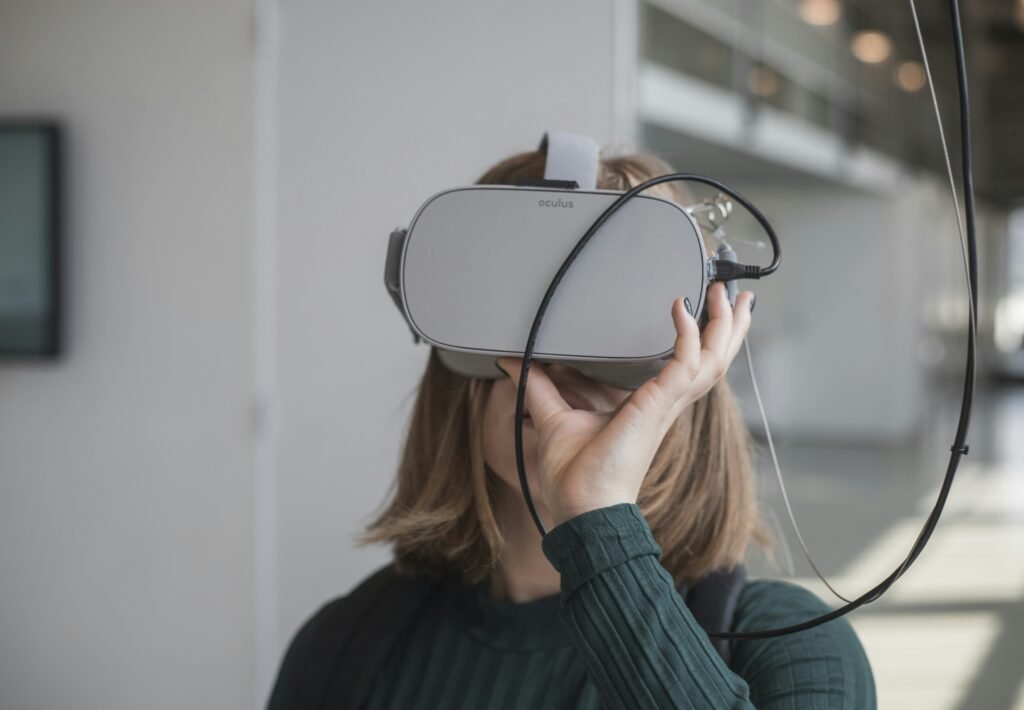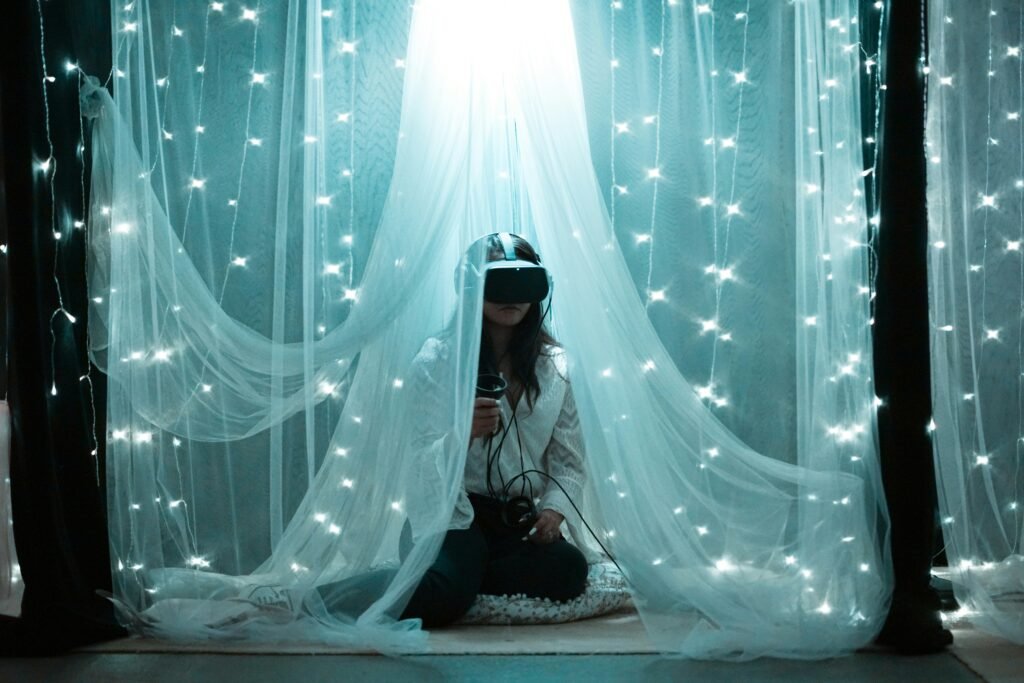Hey there! Are you looking to learn more about how virtual reality is transforming healthcare training? In this article, we’ll explore the exciting advancements in using virtual reality technology to revolutionize medical training. From surgical simulations to bedside manner practice, virtual reality is taking healthcare education to a whole new level. Get ready to dive into the world of virtual reality in medical training and discover how this innovative tool is shaping the future of healthcare professionals.
Hey there, have you ever wondered how the world of healthcare is changing and evolving with the help of technology? Imagine if you could learn, practice, and refine your medical skills in a completely immersive and interactive virtual environment. Well, that’s where virtual reality comes into play! Let’s dive into how virtual reality is revolutionizing healthcare training and shaping the future of medical education.

This image is property of images.unsplash.com.
Check out our Product Reviews
The Rise of Virtual Reality in Healthcare Training
Virtual reality (VR) has made its way into the healthcare industry, transforming the way medical professionals are trained. This cutting-edge technology allows you to step into a simulated world where you can perform surgeries, diagnose patients, and interact with virtual patients in a safe and controlled environment. VR has become an invaluable tool for medical students, residents, and experienced healthcare professionals alike.
Benefits of VR in Healthcare Training
Virtual reality offers a wide range of benefits for healthcare training that traditional methods simply cannot match. Here are some key advantages of incorporating VR into medical education:
- Immersive Learning: VR provides a highly immersive learning experience, allowing you to practice medical procedures in a realistic and interactive setting.
- Safe Environment: With VR, you can make mistakes without any real-world consequences, enabling you to learn from your errors and improve your skills without risking patient safety.
- Cost-Effective Training: VR eliminates the need for expensive equipment and resources, making it a cost-effective solution for medical training programs.
- Enhanced Engagement: Virtual reality creates a more engaging learning environment, keeping you focused and motivated to learn and master complex medical concepts.
- Customized Training: VR allows for personalized and customized training experiences, catering to individual learning styles and needs.
Virtual Reality Applications in Healthcare Training
Virtual reality has a wide range of applications in healthcare training, from surgical simulations to patient care scenarios. Let’s explore some of the most common uses of VR in medical education.
Surgical Simulations
One of the most powerful applications of VR in healthcare training is surgical simulations. With VR surgical simulations, you can practice complex surgical procedures in a virtual operating room, honing your skills and improving your surgical technique in a risk-free environment. Surgeons can benefit from realistic scenarios that closely mimic real surgeries, allowing them to enhance their skills and confidence before stepping into the operating room.
Medical Diagnostics
Virtual reality can also be used to simulate patient scenarios for diagnostic purposes. By immersing yourself in a virtual hospital setting, you can interact with virtual patients, review their medical histories, and make diagnostic decisions in real-time. This hands-on experience helps you develop critical thinking and decision-making skills, preparing you to make accurate diagnoses and provide optimal patient care.
Patient Care and Empathy Training
Empathy is a vital aspect of patient care, and VR can help healthcare professionals develop empathy and improve their communication skills. Virtual reality simulations can expose you to diverse patient populations, allowing you to practice delivering bad news, handling challenging situations, and demonstrating empathy towards patients with different backgrounds and needs. By experiencing these scenarios in a virtual environment, you can enhance your patient care skills and become a more compassionate healthcare provider.
Check out our Product Reviews
Implementing Virtual Reality in Medical Education
Integrating virtual reality into medical education requires careful planning and consideration. Let’s explore the key steps involved in implementing VR technology in healthcare training programs.
Needs Assessment
Before introducing VR into medical education, it is crucial to conduct a needs assessment to identify the specific training requirements and objectives. Understanding the learning goals and challenges of healthcare professionals will help tailor the VR training modules to address these needs effectively.
Curriculum Integration
Integrating VR into the medical curriculum involves aligning virtual reality training modules with the existing educational content. By seamlessly integrating VR into the curriculum, educators can enhance the learning experience and provide hands-on training opportunities for students to practice and refine their skills.
Training and Support
To ensure successful adoption of VR technology in medical education, training and support are essential. Educators and healthcare professionals need adequate training to use VR tools effectively and maximize their potential for learning. Additionally, ongoing technical support is crucial to address any issues or challenges that may arise during the training process.
Evaluation and Feedback
Continuous evaluation and feedback are essential to measure the effectiveness of VR training programs and identify areas for improvement. Collecting feedback from students, educators, and healthcare professionals can help refine the VR modules, enhance the learning experience, and ensure that the training meets the desired outcomes.
Challenges and Future of Virtual Reality in Healthcare Training
While virtual reality offers numerous benefits for healthcare training, several challenges need to be addressed to maximize its potential. Let’s discuss some of the key challenges and the future outlook of VR in medical education.
Cost and Accessibility
One of the primary challenges of implementing VR in healthcare training is the cost associated with acquiring and maintaining the technology. VR equipment, software, and maintenance expenses can be significant, making it essential to find cost-effective solutions to ensure widespread adoption and accessibility for all healthcare professionals.
Technical Support and Infrastructure
Another challenge is the need for robust technical support and infrastructure to support VR training programs. Healthcare institutions must have the necessary hardware, software, and IT resources to deploy and manage virtual reality systems effectively. Addressing technical challenges and ensuring a reliable infrastructure is critical for the success of VR in medical education.
Ethical and Legal Considerations
Virtual reality raises ethical and legal considerations in healthcare training, particularly regarding patient privacy, data security, and ethical use of simulations. Healthcare professionals must adhere to ethical guidelines and regulations when using VR technology to ensure patient confidentiality and protect sensitive medical information.
Future Outlook
Despite these challenges, the future of virtual reality in healthcare training looks promising. As technology continues to advance and VR applications evolve, we can expect to see even more innovative uses of virtual reality in medical education. From AI-powered simulations to remote training capabilities, virtual reality has the potential to revolutionize the way healthcare professionals learn, collaborate, and provide patient care.

This image is property of images.unsplash.com.
Conclusion
In conclusion, virtual reality is revolutionizing healthcare training by offering immersive, interactive, and personalized learning experiences for medical professionals. With the ability to simulate surgeries, diagnose patients, and practice patient care in a virtual environment, VR is shaping the future of medical education and transforming the way healthcare professionals are trained. As we continue to explore the potential of virtual reality in healthcare training, we can look forward to a future where technology plays a central role in empowering healthcare professionals to provide high-quality care and improve patient outcomes.
Check out our Product Reviews